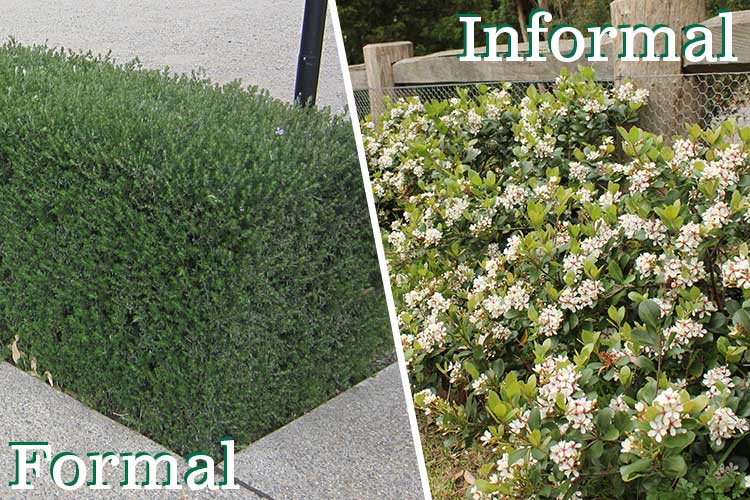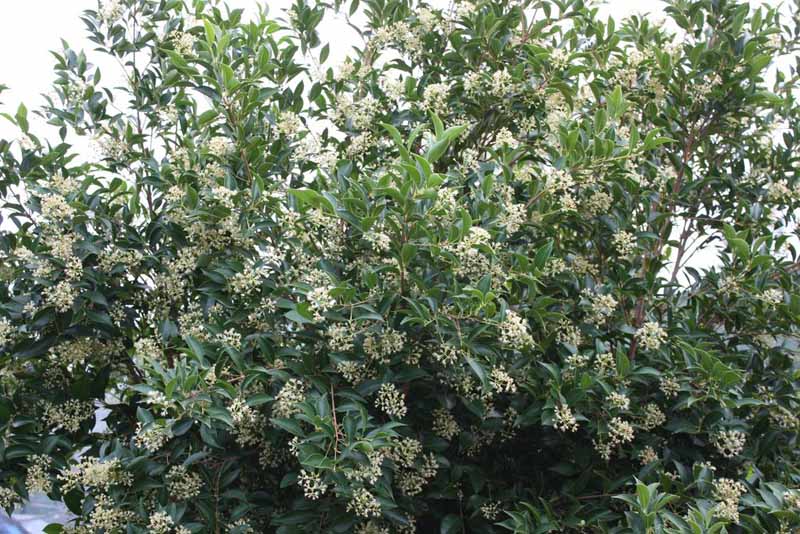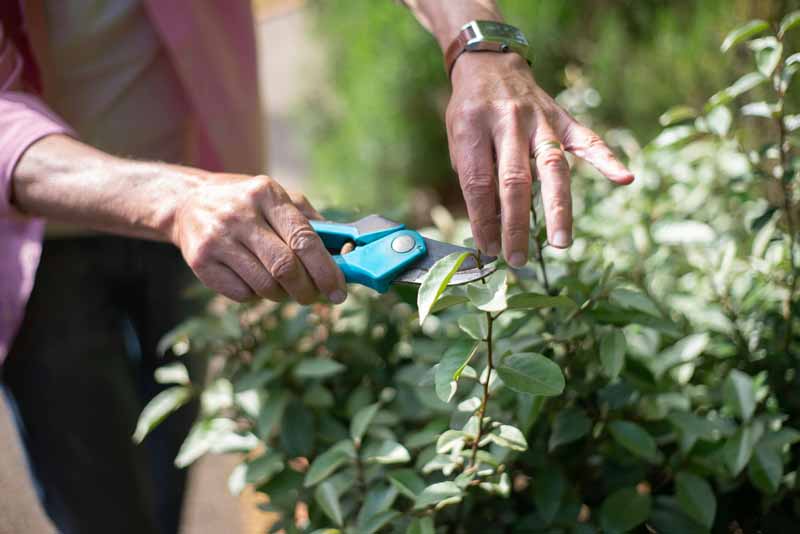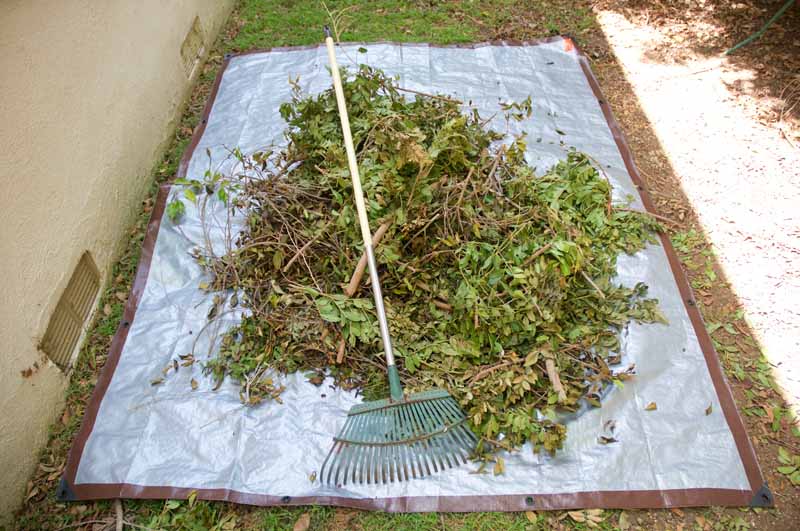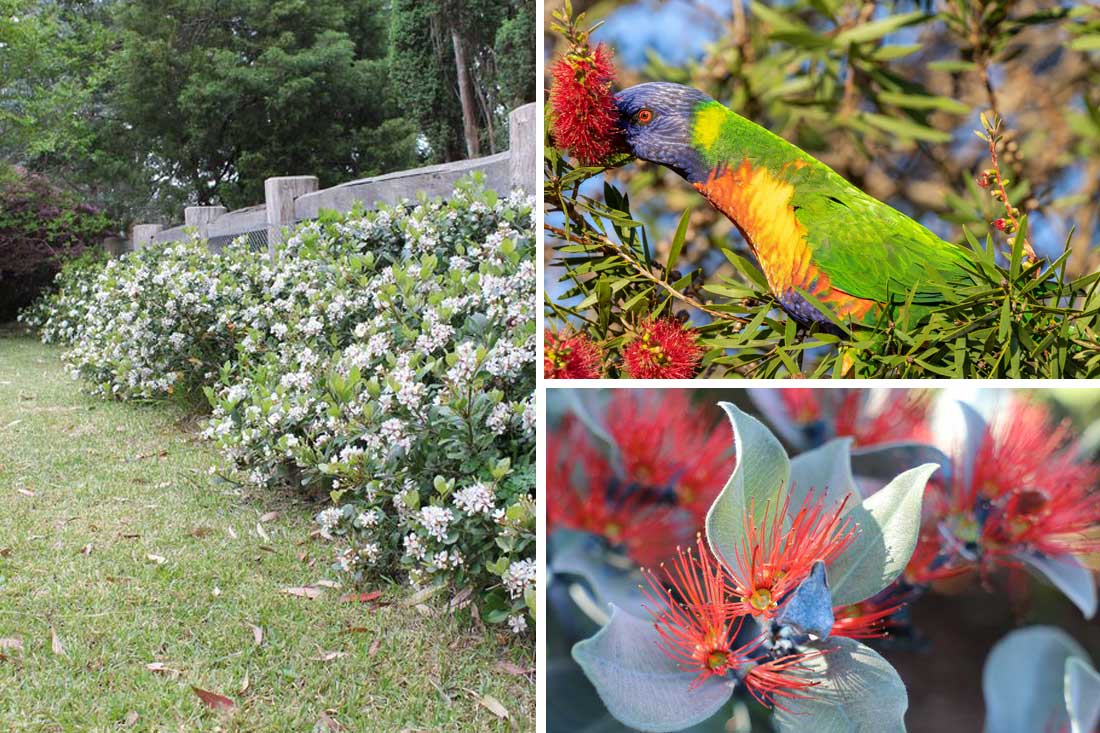The key difference between a formal and an informal hedge is how tightly it is clipped. A formal hedge is usually very tightly clipped and kept very neat. An informal hedge is allowed to have a more natural shape and may only be clipped every year or two to maintain the overall size. Both formal and informal hedges function to define a boundary within a garden and to provide dense screening.
Deciding which is most suitable for you will depend on your garden style and how much time you have for maintenance of the hedge.
A very formal garden style will call for formal neatly clipped hedges. This may include large boundary hedges or small parterre hedges surrounding individual garden beds. Formal hedges, even if they are not extensive can bring a dramatic air of formality to almost any garden. Pruning of plants into formal shapes can also include balls and topiary shapes. In general maintaining plants in any formal shape, be that as a hedge, ball or topiary shape, will require regular clipping in order to maintain a very neat and constant shape. This clipping usually removes less than 5cm of foliage each time.
Formal hedges are best achieved using plants with small leaves. The small leaves tend to give an overall denser and neater appearance and will respond better to tight shaping than will large leaves that may end up being cut in half and can look messy.
An informal hedge is one which receives minimal cutting and has a looser more natural shape. With appropriate plant choice a dense and uniform hedge can be created. Key to success of an informal hedge is correct plant choice. By choosing plants with suitable dense growth habit, including a mature size the same as the desired hedge height, you will obtain a more uniform end result and one which will need significantly less trimming. Without some uniformity you will end up with a green screen but it will not be classed as a hedge, even an informal one.
Height is an important consideration of formal hedges in particular. The taller the hedge the more difficult it tends to be to reach the top to keep it pruned. Therefore if a tall hedge is desired a less formal hedge is recommended to minimise the amount of difficult pruning required.
In reality most hedges fall somewhere in the middle between these two extremes. In general we want hedges to be neat and dense but we tend to be a little forgiving about a little looseness to the shape, so long as it doesn’t get too shaggy. Frequency of clipping will determine just how tightly shaped and formal your hedge is or isn’t, and this is a matter of personal style.
The amount of clipping any hedge needs will depend on the plant choice and the growing conditions. The faster the plant grows, the more often it will need to be pruned into shape. Favourable growing conditions such as fertile soil, plentiful moisture and warm weather can also contribute. In a wet Queensland summer it is not uncommon that a murraya hedge will need pruning every 2 -4 weeks to keep a tight formal hedge. As an informal hedge the same hedge would still need to be pruned at least every 2 months simply to manage the overall size. Formal hedges therefore tend to be seen more often in cool climate gardens where growth rates are slower and frequency of pruning is reduced.
The warmer the climate, the greater care needs to be taken with plant choice in order to reduce the need for excessive pruning.
There are many lily pilies available and most of them make excellent hedging plants. It is very important that the right variety is chosen for your situation. Most will work very well as formal hedges with regular pruning. They also make excellent informal hedges however if the wrong variety is chosen with too little pruning you may well end up with a row of trees with bare trunks instead of any sort of hedge at all.
The lily pily Hobbit™ Syzygium francisii ‘DBK01’ PBRis an ideal plant choice for a formal or informal hedge. In 5 or 6 years it can reach 3m tall but its slow growth means that it will require minimal pruning to keep it in shape. As formal hedge it may require pruning 2 or 3 times per year, as an informal hedge, it may never need pruning at all.
Pinnacle™ Syzygium australe ‘AATS’ PBRis an ideal lily pily for creating formal topiary shapes, including cone shapes, and formal narrow hedges. As an informal hedge it has a naturally dense and narrow habit making it perfect for narrow spaces. It will eventually reach 6m and will retain foliage to ground level without the need for regular pruning.
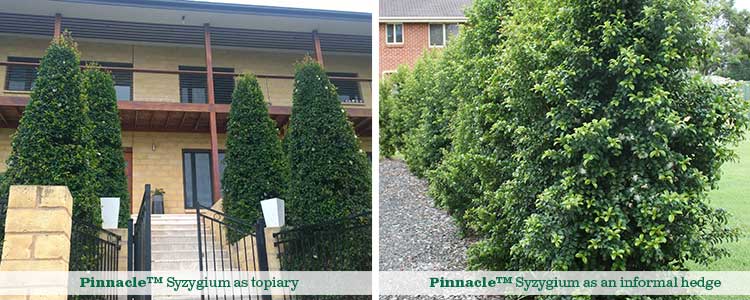
Ozbreed Aussie Box® Westringia ‘WES02’ PBR is widely recognised as an ideal native alternative to exotic box hedges. It has small dark green leaves which work very well when pruned into very tight formal shapes. This Westringia and also Grey Box™Westringia fruticosa ‘WES04’ PBR have natural ball shapes, so can be easily clipped into very tight balls with very little maintenance or can be left unpruned for a semi-formal effect.
It should be noted that fast growing plants such as Murraya and duranta and even some lily pilies are not suitable for use as informal hedges due to their tendency to become small trees with bare trunks. Although they have been very popular as hedge plants, they will need very regular pruning in order to maintain them as hedges at all. Better choices for informal hedges are plants which maintain a dense and compact nature and which do not become to unruly if left unpruned. Many Callistemons, such as Macarthur™ Callistemon viminalis ‘LC01’PBRmake ideal informal hedges. Macarthur™ is naturally dense and compact therefore can provide dense and floriferous hedges without the need for regular pruning.
In order to make the most suitable plant selection for your hedge, you first need to decide if you wish to create a formal or informal style of hedge. Almost any plant that responds well to pruning can be used to create a formal hedge, although the amount of pruning it may need in order to maintain a formal shape will need to be considered. For an informal hedge a key criteria will be the overall size and shape of the mature plant – will it give you the desired effect if rarely pruned?
*Article published by Kate Wall

